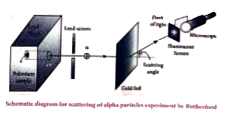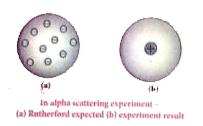Recommended Questions
- Explain the results of Rutherford alpha-particle scattering experiment...
04:51
|
Playing Now - From the alpha - particle scattering experiment Rutherford concluded t...
00:42
|
Play - From the alpha-particle scattering experiment, Rutherford conculded th...
01:42
|
Play - Rutherford's alpha particle scattering experiment was responsible for ...
01:11
|
Play - रदरफोर्ड के alpha- कणों के प्रकीर्णन -प्रयोग में, alpha-कणों का स्त्र...
02:13
|
Play - अल्फा कणों के रदरफोर्ड प्रकीर्णन प्रयोग से निष्कर्ष निकलता है कि :
05:16
|
Play - Explain the results of Rutherford alpha-particle scattering experiment...
04:51
|
Play - Explain the results of Rutherford alpha -particle scattering experimen...
04:51
|
Play - Explain the results of Rutherford alpha-particle scattering experiment...
04:51
|
Play

